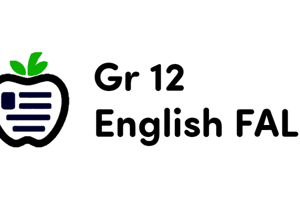Podcast
Questions and Answers
What is the purpose of the regulatory function of language?
What is the purpose of the regulatory function of language?
- To persuade or command others to take action. (correct)
- To explore and learn about the environment.
- To express personal identity and preferences.
- To develop social relationships.
Which function of language is primarily concerned with learning and exploration?
Which function of language is primarily concerned with learning and exploration?
- Imaginative
- Heuristic (correct)
- Representational
- Interactional
What does the label 'protesting' refer to in Dore's functions of infant language?
What does the label 'protesting' refer to in Dore's functions of infant language?
- Expressing joy during play.
- Introducing oneself to a group.
- Objecting to a request made by another. (correct)
- Responding to questions asked by adults.
Which of the following best describes the imaginative function of language?
Which of the following best describes the imaginative function of language?
In Dore's functions, what does 'practising' specifically refer to?
In Dore's functions, what does 'practising' specifically refer to?
At what age do children typically start combining two words to create simple syntactical structures?
At what age do children typically start combining two words to create simple syntactical structures?
Which of the following is true about the telegraphic speech stage?
Which of the following is true about the telegraphic speech stage?
What characterizes the post-telegraphic stage of language development?
What characterizes the post-telegraphic stage of language development?
Which phonological process involves omitting the final consonant in words?
Which phonological process involves omitting the final consonant in words?
What type of sounds do fricatives include?
What type of sounds do fricatives include?
At which age do children typically produce the phonemes 'tʃ' and 'dʒ'?
At which age do children typically produce the phonemes 'tʃ' and 'dʒ'?
Which of the following best describes reduplication in phonological development?
Which of the following best describes reduplication in phonological development?
What is the primary function of consonant cluster reductions?
What is the primary function of consonant cluster reductions?
What does the process of assimilation in phonology refer to?
What does the process of assimilation in phonology refer to?
Which process describes adding an extra vowel sound to the ends of words?
Which process describes adding an extra vowel sound to the ends of words?
In the context of the developmental stages, what do children in the one-word stage typically use?
In the context of the developmental stages, what do children in the one-word stage typically use?
Which of the following best describes the characteristics of the two-word stage?
Which of the following best describes the characteristics of the two-word stage?
Which of the following phonemes is typically produced by children by 30 months of age?
Which of the following phonemes is typically produced by children by 30 months of age?
Flashcards are hidden until you start studying
Study Notes
Halliday's Functions of Speech
- Regulatory: Language used to influence others' actions, like persuading or commanding.
- Interactional: Language for building social relationships and easing interaction.
- Personal: Language showcasing the speaker's preferences and identity, often expressed as "Here I am!".
- Representational: Language used to share information, either relaying or seeking it.
- Heuristic: Language for learning and exploring, often used by children, with questions, answers, and commentary during play.
- Imaginative: Language used to explore the imagination, like storytelling or creating imaginary worlds.
Dore's Infant Language Functions
- Labelling: Naming or identifying people, objects, or experiences.
- Repeating: Echoing language spoken by more advanced speakers.
- Answering: Directly responding to questions or statements.
- Requesting action: Demanding something, like food or drink.
- Calling: Shouting or speaking loudly to grab attention.
- Greeting: Saying "hi" or "hello".
- Protesting: Objecting to a request.
- Practicing: Repeating language independently, attempting to develop language skills.
Stages of Language Development
- One word/holophrastic: Single-word utterances, appearing around 12-18 months.
- Two word: Combination of two words for simple syntax (subject + verb, verb + object), starting around 18-24 months.
- Telegraphic: Three or more words joined in increasingly complex and accurate orders (subject + verb + object, subject + verb + complement, subject + verb + adverb), occurring between 24-36 months.
- Post-telegraphic: Increased awareness of grammatical rules and irregularities, beginning after 36 months.
Phonology Help Sheet
- Deletion: Omitting final consonants in words, like "do(g)" or "cu(p)".
- Substitution: Replacing one sound with another, example: "pip" for "ship".
- Addition: Adding an extra vowel sound to the end of words, creating a CVCV pattern, like "doggie".
- Assimilation: Changing one consonant or vowel for another, "gog" for "dog".
- Reduplication: Repeating a whole syllable, "dada" or "mama".
- Consonant cluster reductions: Reducing consonant clusters, "pider" for "spider".
- Deletion of unstressed syllables: Removing the opening syllable of polysyllabic words, "nana" for "banana".
Phonemes by Age
- 24 months: p, b, m, d, n, w, t.
- 30 months: k, g, h, ŋ.
- 36 months: f, s, j, l.
- 42 months: tʃ, dʒ, v, z, ʃ, r.
- 48+ months: ð, ʒ.
Theoretical Approaches
- Behaviorism: Language acquisition is learned through reinforcement and imitation.
- Nativism: Humans are born with an innate Language Acquisition Device (LAD).
- Cognitive: Language is learned through the development of cognitive skills, such as memory, attention, and problem-solving.
- Interactionist: Language develops through social interaction and the child's active role in their environment.
- Social Interactionist: Language is learned through interaction with others, with emphasis on the importance of social contexts.
- Information Processing: Language learning is based on the processing and storage of information in the brain.
- Functionalism: Focuses on the social and communicative functions of language.
- Constructivism: Language is constructed through personal experience and active learning.
- Dynamic Systems Theory: Acquisition is a complex, nonlinear process influenced by multiple factors.
Studying That Suits You
Use AI to generate personalized quizzes and flashcards to suit your learning preferences.




